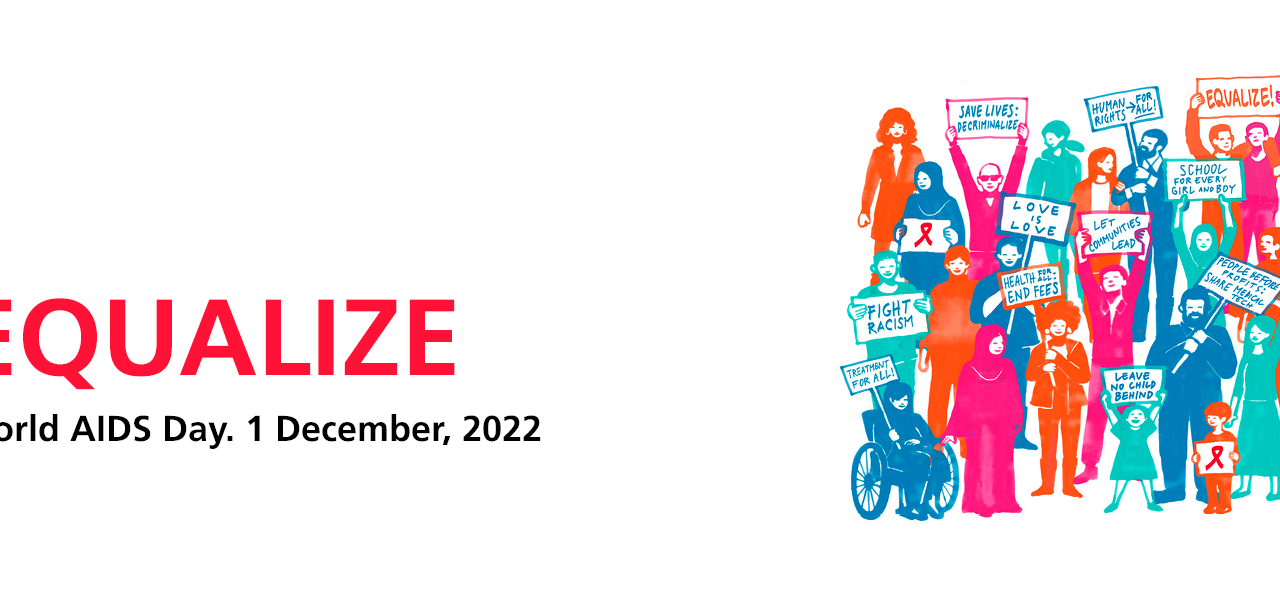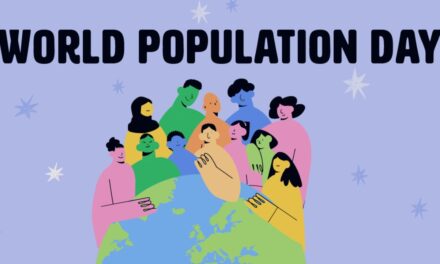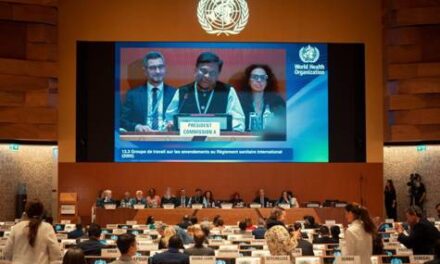WHAT IS WORLD AIDS DAY?
Each year, on 1 December, the world commemorates World AIDS Day. People around the world unite to show support for people living with HIV and to remember those who have died from AIDS-related illnesses.
Each World AIDS Day focuses on a specific theme, which this year will be Equalize. This year’s theme joins a growing list of challenges that World AIDS Day has alerted people to globally.
Founded in 1988, World AIDS Day was the first-ever international day for global health. Every year, United Nations agencies, governments and civil society join together to campaign around specific themes related to HIV.
- Awareness-raising activities take place around the globe.
- Many people wear a red ribbon, the universal symbol of awareness of, support for and solidarity with people living with HIV.
- People living with HIV make their voices heard on issues important in their lives.
- Groups of people living with HIV and other civil society organizations involved in the AIDS response mobilize in support of the communities they serve and to raise funds.
- Events highlight the current state of the epidemic.
World AIDS Day remains as relevant today as it’s always been, reminding people and governments that HIV has not gone away. There is still a critical need for increased funding for the AIDS response, to increase awareness of the impact of HIV on people’s lives, to end stigma and discrimination and to improve the quality of life of people living with HIV.
HIV
Key facts
- To reach the new proposed global 95–95–95 targets set by UNAIDS, we will need to redouble our efforts to avoid the worst-case scenario of 7.7 million HIV-related deaths over the next 10 years, increasing HIV infections due to HIV service disruptions during COVID-19, and the slowing public health response to HIV.
- HIV continues to be a major global public health issue, having claimed 40.1 million [33.6–48.6 million] lives so far.
- In 2021, 650 000 [510 000–860 000] people died from HIV-related causes and 1.5 million [1.1–2.0 million] people acquired HIV.
- There is no cure for HIV infection. However, with increasing access to effective HIV prevention, diagnosis, treatment and care, including for opportunistic infections, HIV infection has become a manageable chronic health condition, enabling people living with HIV to lead long and healthy lives.
- There were an estimated 38.4 million [33.9–43.8 million] people living with HIV at the end of 2021, two thirds of whom (25.6 million) are in the WHO African Region.
Overview
The human immunodeficiency virus (HIV) targets the immune system and weakens people’s defense against many infections and some types of cancer that people with healthy immune systems can more easily fight off. As the virus destroys and impairs the function of immune cells, infected individuals gradually become immunodeficient. Immune function is typically measured by CD4 cell count.
The most advanced stage of HIV infection is acquired immunodeficiency syndrome (AIDS), which can take many years to develop if not treated, depending on the individual. AIDS is defined by the development of certain cancers, infections or other severe long-term clinical manifestations.
Signs and symptoms
The symptoms of HIV vary depending on the stage of infection. Though people living with HIV tend to be most infectious in the first few months after being infected, many are unaware of their status until the later stages. In the first few weeks after initial infection people may experience no symptoms or an influenza-like illness including fever, headache, rash or sore throat.
As the infection progressively weakens the immune system, they can develop other signs and symptoms, such as swollen lymph nodes, weight loss, fever, diarrhoea and cough. Without treatment, they could also develop severe illnesses such as tuberculosis (TB), cryptococcal meningitis, severe bacterial infections, and cancers such as lymphomas and Kaposi’s sarcoma.
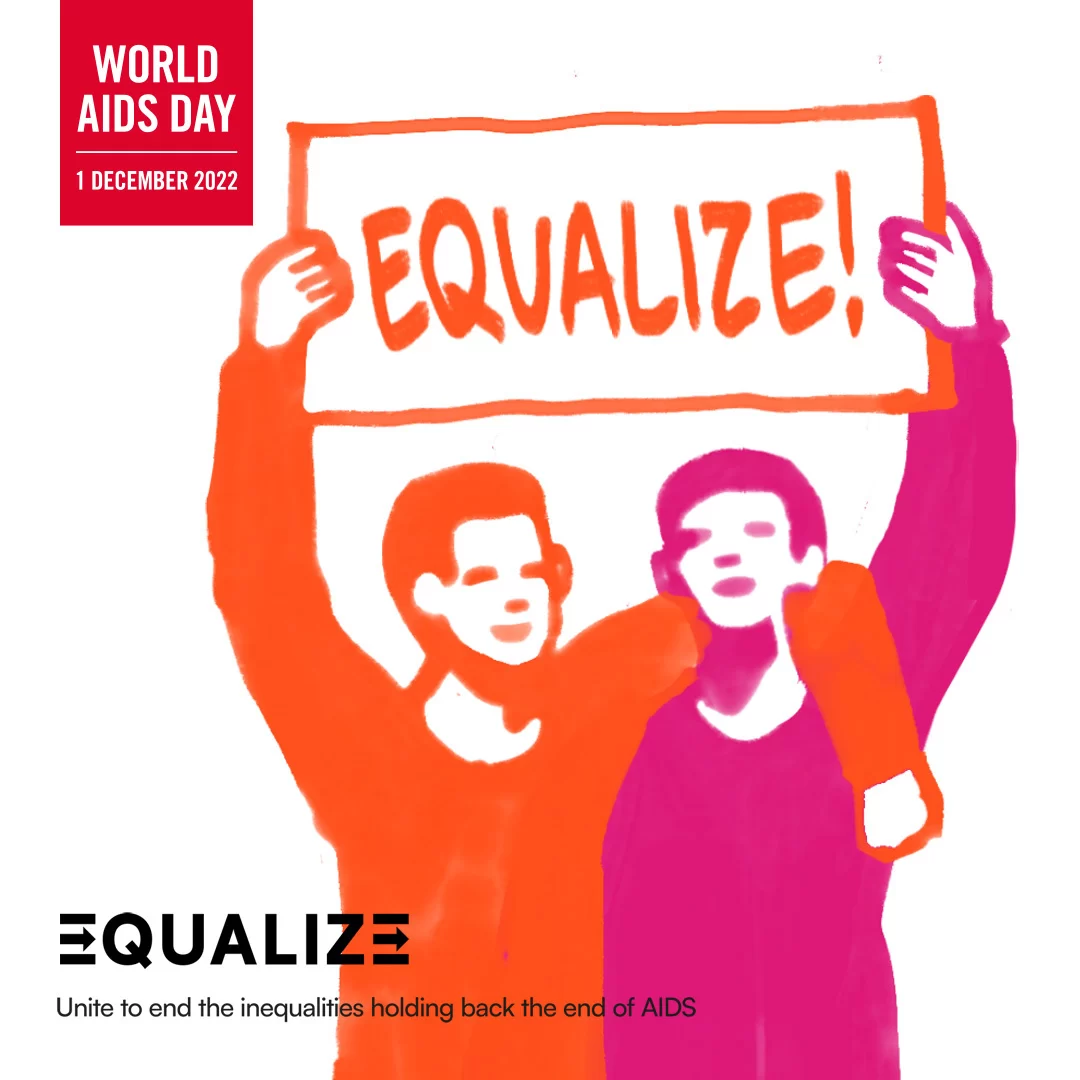
Social media tiles on World AIDS Day 2022
Transmission
HIV can be transmitted via the exchange of a variety of body fluids from infected people, such as blood, breast milk, semen and vaginal secretions. HIV can also be transmitted from a mother to her child during pregnancy and delivery. Individuals cannot become infected through ordinary day-to-day contact such as kissing, hugging, shaking hands, or sharing personal objects, food or water.
It is important to note that people with HIV who are taking ART and are virally suppressed do not transmit HIV to their sexual partners. Early access to ART and support to remain on treatment is therefore critical not only to improve the health of people with HIV but also to prevent HIV transmission.
Risk factors
Behaviours and conditions that put individuals at greater risk of contracting HIV include:
- having condomless anal or vaginal sex;
- having another sexually transmitted infection (STI) such as syphilis, herpes, chlamydia, gonorrhoea and bacterial vaginosis;
- engaging in harmful use of alcohol and drugs in the context of sexual behaviour;
- sharing contaminated needles, syringes and other injecting equipment and drug solutions when injecting drugs;
- receiving unsafe injections, blood transfusions and tissue transplantation, and medical procedures that involve unsterile cutting or piercing; and
- experiencing accidental needle stick injuries, including among health workers.
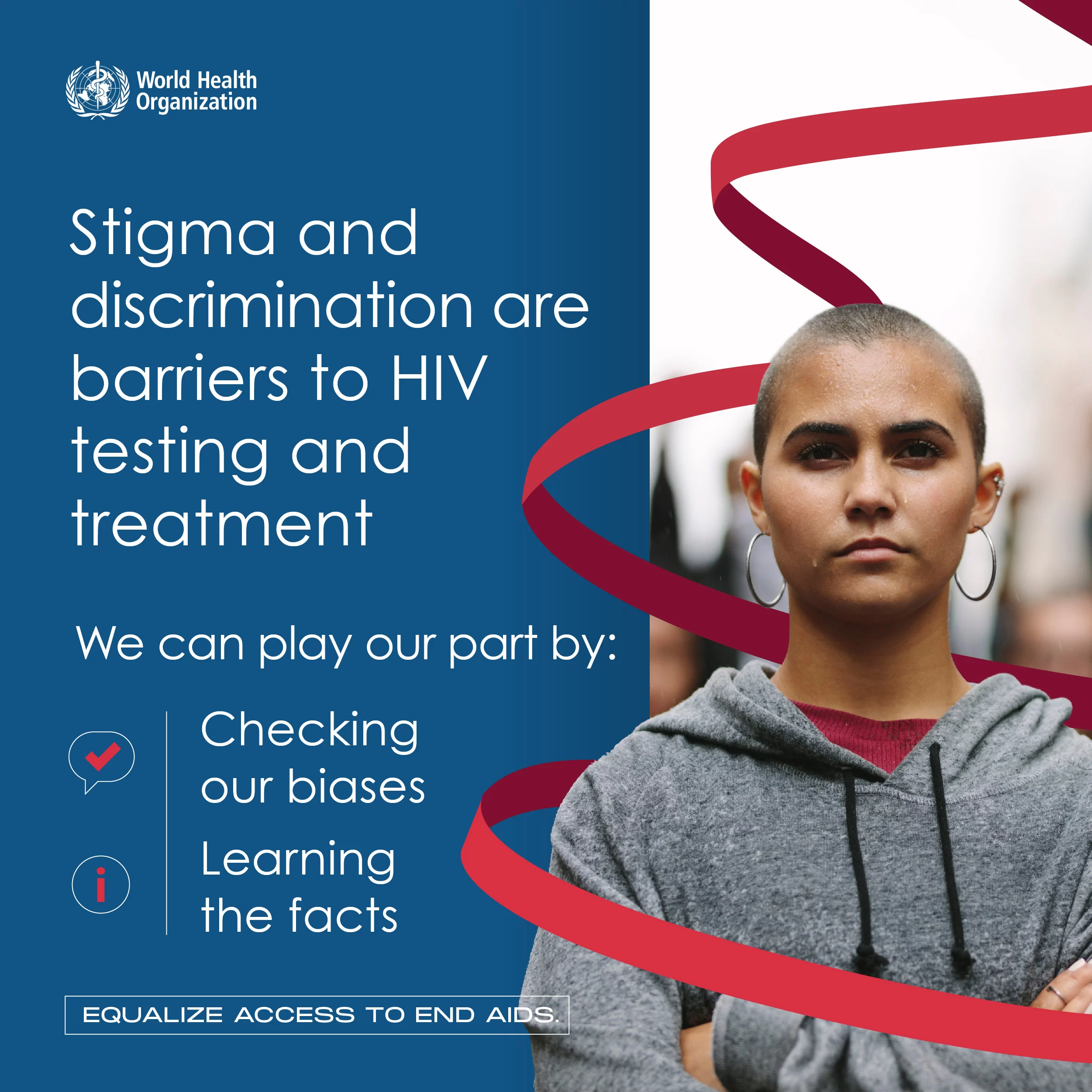
World AIDS Day 2022
Diagnosis
HIV can be diagnosed through rapid diagnostic tests that provide same-day results. This greatly facilitates early diagnosis and linkage with treatment and care. People can also use HIV self-tests to test themselves. However, no single test can provide a full HIV positive diagnosis; confirmatory testing is required, conducted by a qualified and trained health or community worker at a community centre or clinic. HIV infection can be detected with great accuracy using WHO prequalified tests within a nationally approved testing strategy and algorithm.
Most widely-used HIV diagnostic tests detect antibodies produced by the person as part of their immune response to fight HIV. In most cases, people develop antibodies to HIV within 28 days of infection. During this time, people experience the so-called window period – when HIV antibodies haven’t been produced in high enough levels to be detected by standard tests and when they may have had no signs of HIV infection, but also when they may transmit HIV to others. After infection without treatment and viral suppression, an individual may transmit HIV transmission to a sexual or drug-sharing partner or for pregnant women to their infant during pregnancy or the breastfeeding period.
Following a positive diagnosis, people should be retested before they are enrolled in treatment and care to rule out any potential testing or reporting error prior to starting life-long treatment. It is important to support people with HIV to stay on treatment and provide counselling messages and services when there are concerns about the accuracy of their diagnosis or if they stop treatment and care and need to be re-engaged.
While testing for adolescents and adults has been made simple and efficient, this is not the case for babies born to HIV-positive mothers. For children less than 18 months of age, rapid antibody testing is not sufficient to identify HIV infection – virological testing must be provided as early as birth or at 6 weeks of age. New technologies are now available to perform this test at the point of care and enable same-day results, which will accelerate appropriate linkage with treatment and care.
Prevention
Individuals can reduce the risk of HIV infection by limiting exposure to risk factors. Key approaches for HIV prevention, which are often used in combination, include:
- male and female condom use;
- prevention, testing and counselling for HIV and STIs;
- voluntary medical male circumcision (VMMC);
- use of antiretroviral drugs (ARVs) for prevention (oral PrEP and long acting products), the dapivirine vaginal ring and injectable long-acting cabotegravir;
- harm reduction for people who inject and use drugs; and
- elimination of mother-to-child transmission (MTCT) of HIV.
HIV is not transmitted if a person’s sexual partner is virally suppressed on ART, so increasing access to testing and supporting linkage to ART is an important component of HIV prevention.
Treatment
HIV disease can be managed by treatment regimens composed of a combination of antiretroviral (ARV) drugs. Current antiretroviral therapy (ART) does not cure HIV infection but suppresses viral replication and allows an individual’s immune system recovery to strengthen and regain the capacity to fight off opportunistic infections and some cancers.
Since 2016, WHO has recommended Treat All: that all people living with HIV be provided with lifelong ART, including children, adolescents, adults and pregnant and breastfeeding women, regardless of clinical status or CD4 cell count.
By June 2022, 189 countries had already adopted this recommendation, covering 99% of all people living with HIV globally. In addition to the Treat All strategy, WHO recommends a rapid ART initiation to all people living with HIV, including offering ART on the same day as diagnosis among those who are ready to start treatment. By June 2022, 97 countries reported that they have adopted this policy, and almost two-thirds of them reported country-wide implementation.
Globally, 28.7 million people living with HIV were receiving ART in 2021. Global ART coverage was 75% [66–85%] in 2021. However, more efforts are needed to scale up treatment, particularly for children and adolescents. Only 52% [42–65%] of children (0–14 years old) were receiving ART at the end of 2021.
Advanced HIV disease remains a persistent problem in the HIV response. People continue to present or re-present for care with advanced immune suppression, putting them at a higher risk of developing opportunistic infections. WHO is supporting countries to implement the advanced HIV disease package of care to reduce illness and death.


